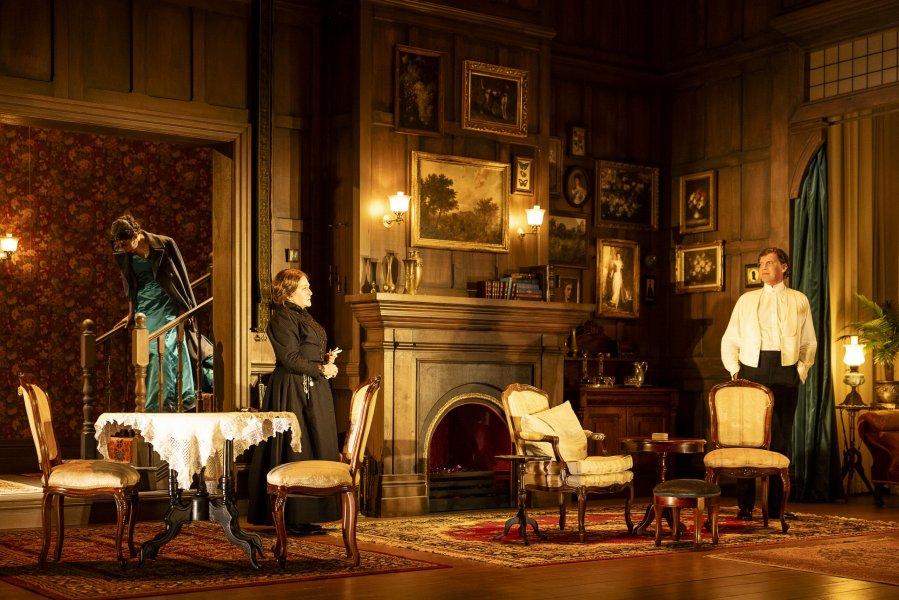By David Gardette
Premiering in 1938, Patrick Hamilton’s psychological thriller has enjoyed many iterations across stage, TV and film — most notably George Cuckor’s 1944 film noir starring Angela Lansbury in her film debut and garnering a Best Actress Oscar for Ingrid Bergman.
Originally written as a three act with a cast of five, this version has been adapted to two acts and four cast — omitting the role of police detective Rough. Canadian theatre artists Johnna Wright and Patty Jamieson set out to explore what would happen if our female protagonist, Bella, were to unravel her husband Jack’s deception, instead of the usual male saviour as was the norm in classic texts. Although some purists will disagree with tampering with a classic, on this occasion it works. Instead of purely portrayed as overwrought and ‘prone to hysteria and mental weakness’, Bella’s character arc is transformative.
Having recently moved into a new home with a murderous past, newlyweds Bella and Jack Manningham’s idyllic life starts to unravel. Troubled by her husband’s continuous unexplained disappearances from the house, noises in the night that only she seems to be able to hear, mysterious movement of paintings and the ‘misplacement’ of keepsakes, Bella starts to imagine she is venturing down the same path as her mother — one of insanity. To go further into the plot will give away many of its revelations and Gaslight is a play with many dark twists that keep the audience gripped — and on this occasion there is even a thrilling audible audience ‘aha’ moment.
Geraldine Hackwell is captivating as Bella who looks and feels every part Victorian London, thanks in part to Renee Mulder’s immaculately tailored costuming — a visual treat. But there is a grace, restraint and steadfastness, even in Bella’s hysteria moments, that Hackwell carries so intelligently and is wonderful to watch. Toby Schmidt as Bella’s manipulative husband Jack, is compellingly understated. Stillness, silence and vocal tone gives Jack’s psychological scheming a disquieting menace — aiding his enraged outbursts even the more unsettling. Kate Fitzpatrick is wonderfully poker faced as the no nonsense stoic housekeeper Elizabeth, and newcomer Courtney Cavallaro, maid Nancy, has a youthful impertinence — although I’m not convinced her modern physicalities entirely suited the Victorian rigidity the other three actors illustrated so well.
It could be argued thought that there is in fact a fifth character — the house. It has been a very long time since I have experienced such an atmospheric production design. An obvious collaboration between director Lee Lewis and Scenic designer Renee Mulder has culminated in a wonderfully elaborate and intricate design that transports. But it is the addition of Paul Jackson’s brooding lighting and Paul Charlier’s original music and sound design that gives this house a character of its own. There is something unsettling at curtain up, that stays with you for its entirety.
In the hands of a lesser director, Gaslight could very easily fall into hysterical melodrama with nowhere to go, but what Lee Lewis does so cleverly is give us just hints of this melodrama, hints of this hysteria, before pulling us back into something substantial — giving Bella the opportunity to become the heroine of her own story. It is this element of modernity that propels this popular classic into a contemporary psychological drama.
Gaslight plays at the Comedy Theatre until 24 March.





